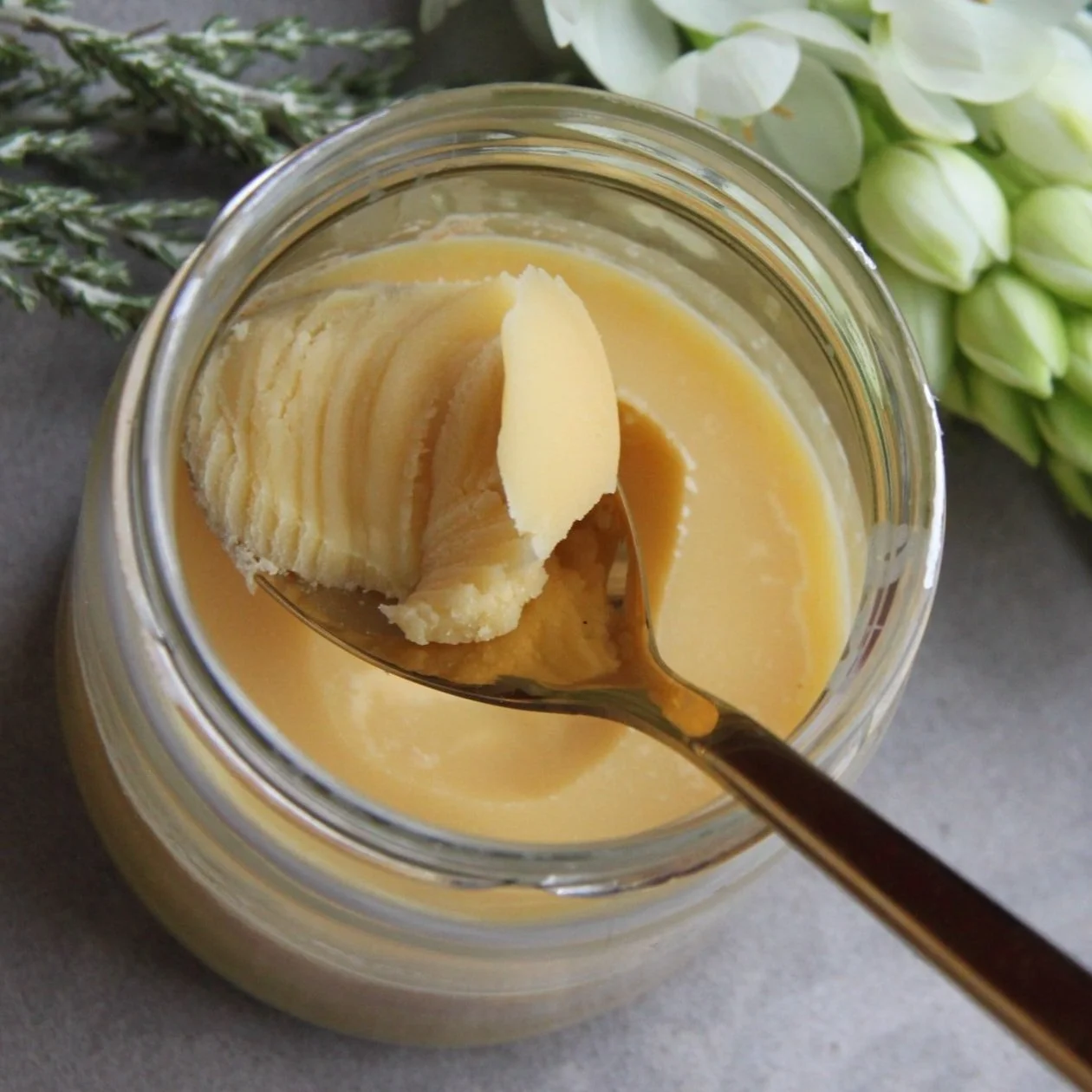Ghee is highly revered in ayurveda as a deeply healing oil, a pure expression of love and generous giving of nature.
Ghee is clarified butter, meaning milk solids have been removed from the fat - this leaves little to no lactose so it is often tolerated by those who are sensitive. Its stable fats lend themselves well to high-heat cooking. Super flavorful!
It has recently appeared on health store shelves alongside keto lards and coconut oil. Best and most fresh is homemade. It’s easy, and much cheaper!
Don’t stop at cooking with it. You can use it as a stand-in for body lotion, massage oil, or mouthwash.
A BIT OF SCIENCE
When butter is clarified, the milk solids like proteins, carbohydrates, vitamins, and minerals are removed, except for the fat-soluble vitamins. Butter is composed of milk fat (at least 80%), milk solids (about 1%), and water (16 to 18%).
To successfully make ghee, the process starts with simmering butter (between 221 to 244°F ) to evaporate the water. The temperature is then elevated (to above 266 °F) so the lactose, casein and whey proteins brown to infuse nutty flavor.
Browning the milk solids adds wonderfully toasted flavors that become infused with the butter oil. To prevent burning of the milk solids, the butter should not reach its smoke point of 350°F. You can use an instant-read thermometer for more accuracy to check the temperatures.
INGREDIENTS
Four to eight sticks of butter
STEP 1: Melt the Butter
Use a heavy-bottomed pan, dutch oven, or stainless steel skillet so that the milk solids do not rapidly burn. It’s best to cut the butter into smaller pieces so it melts evenly and the solids brown consistently. Apply medium heat to melt the butter, then reduce to medium-low to simmer
STEP 2: Allow Solids to Separate
Once the butter has completely melted, it will bubble and begin to separate. As the butter simmers, some of the milk proteins rise and sit on the surface as it separates from the fat and water. Let them sink to the bottom. This takes times, depending on the butter quality, cow diet, etc. At least 20 min.
STEP 3: Brown the Butter Solids
Once you heat an intermittent simmer sound continue to simmer the butter over medium-low heat. Make sure not to take your eyes off the butter. It will quickly begin to change a golden color with amber brown solids formed at the bottom of the pan. When you see this change and smell toffee flavors, it’s time to turn off the heat and remove the pan from the stove.
STEP 5: Strain the Brown Butter Solids
Allow the ghee to cool slightly for about 3 to 5minutes. Strain into jars carefully leaving solids in the pan or use a fine-mesh strainer. Carefully pour the butter oil into the jar, leaving the browned solids in the pan or strainer.
As the liquid cools it will solidify and have a beeswax like yellow color. Sometimes, depending on the season, quality of the butter, cow diet or star alignment, the ghee can turn out either smooth or grainy. Either way it is good!
TROUBLESHOOTING: if the ghee does not turn solid when cooled down, you jumped the gun on calling it done. Return to pan and cook on low heat for longer.
Keep in a pantry or a dark place for up to 3 months.

